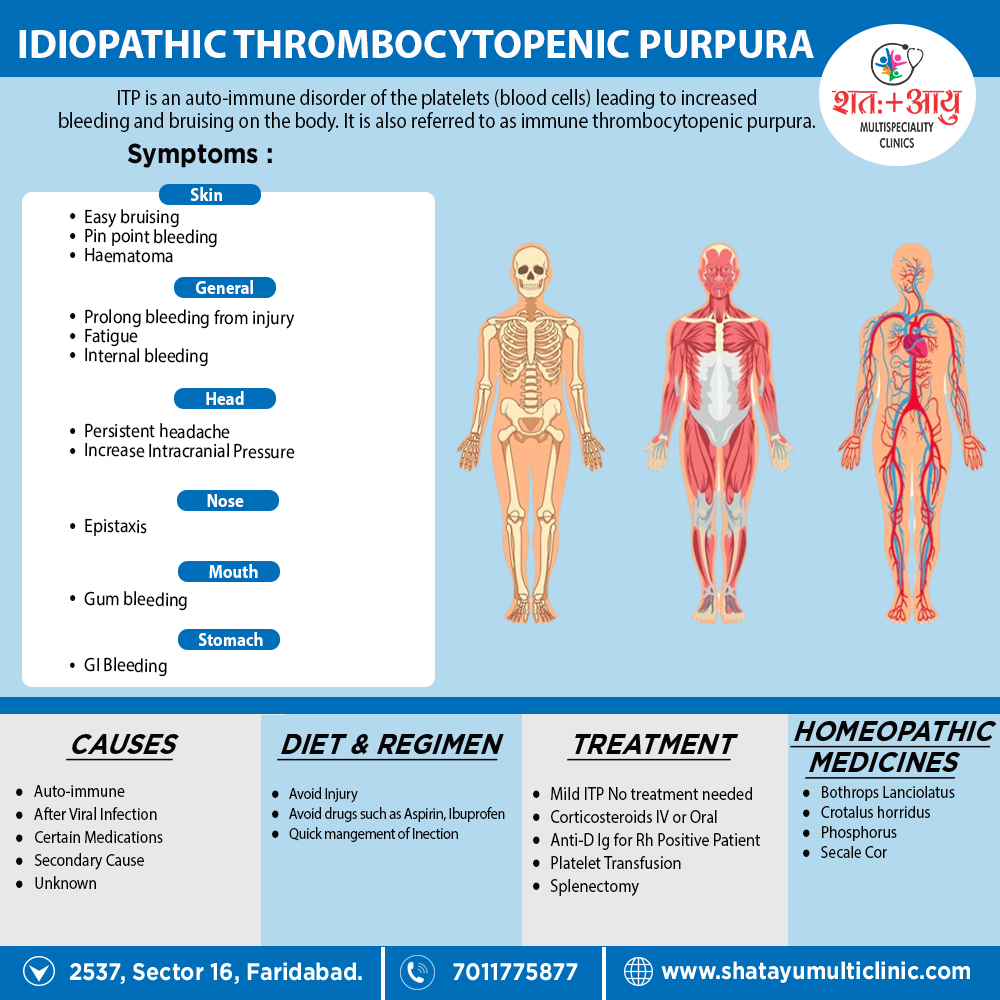Treatment of Idiopathic Thrombocytopenic Purpura (IDP)
Conservative treatment
[a] Bleeding not severe i.e.–
Wait and see policy especially in children and young women up to the age of 25, because spontaneous remission, often permanent occurs in number of patients. Moreover, Initiate treatment when PCT <30,000
[b] Severe bleeding i.e.–
(i) Blood transfusion.
(ii) Prednisolone – 40 mg a day for 2 weeks.
- Sometimes permanent remission. Observe patient at intervals for next 12 months.
- If purpura disappears either partially or completely but platelet count remains low, 5-15 mg. of prednisolone daily for a further period of at least 3 months in the hope that permanent remission will occur.
Immunosuppressive therapy
Drugs such as azathioprine or cyclophosphamide are sometimes used in patients who are refractory to splenectomy and steroids or develop relapse.
Immunoglobulin preparations
- IV infusions of large doses result in reticuloendothelial blockade, and may be warranted in life-threatening situation.
Rituximab weekly in doses of 375 mg/m2 can produce remission for a period of time.
TPO receptor agonists – Romiplostim (given subcutaneously) and another orally eltrombopag (given orally) effective in raising platelet counts in patients with ITP and are recommended for adults at risk of bleeding who relapse after splenectomy or who have been unresponsive to at least one other therapy, particularly in those who have a contraindication to splenectomy. [1]
-
Splenectomy – Indications –
(a) Chronic cases, particularly adults, who have not had sustained response to steroids, and in whom troublesome bleeding persists after 6 months.
(b) Symptoms severe and platelet count very low.
(c) Signs of incipient central nervous system hemorrhage.
(d) Girls approaching age of onset of menstruation.
(e) Young married women likely to become pregnant.
(f) First 5 months of pregnancy.
(g) Steroid refractory
Pregnancy
Anti-platelet auto antibodies in a pregnant woman with ITP will attack the patient’s own platelets and will also cross the placenta and react against fetal platelets. Therefore, ITP is a significant cause of fetal and neonatal immune thrombocytopenia. [1]

